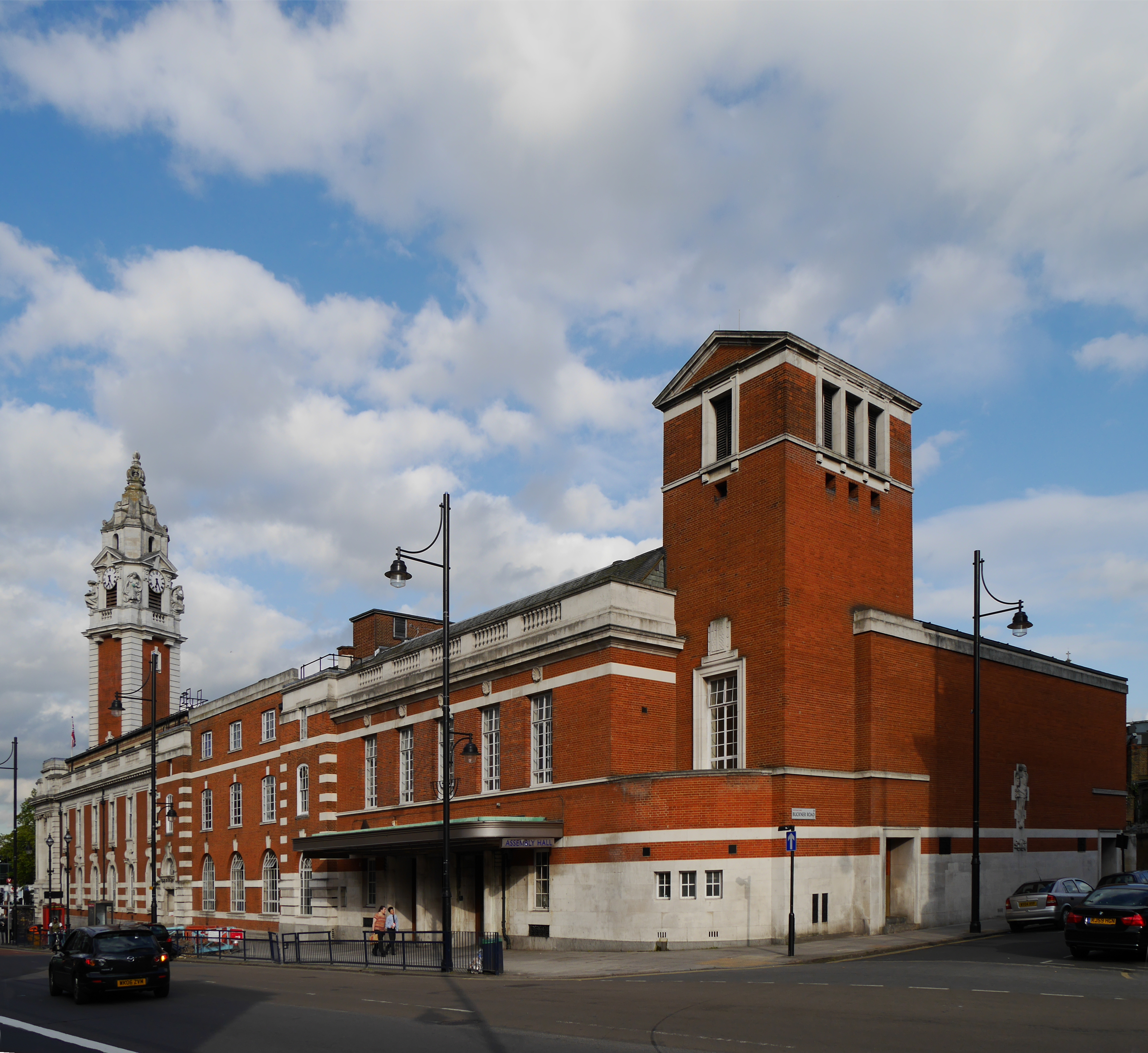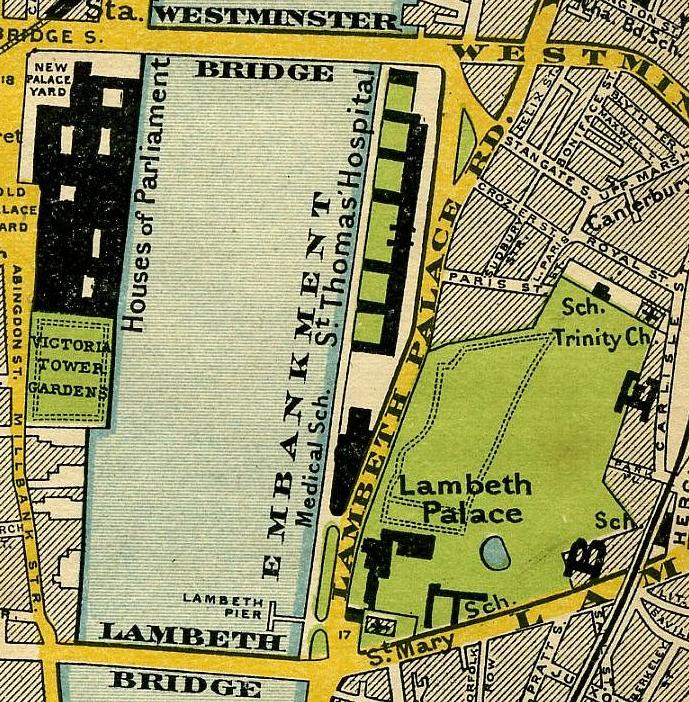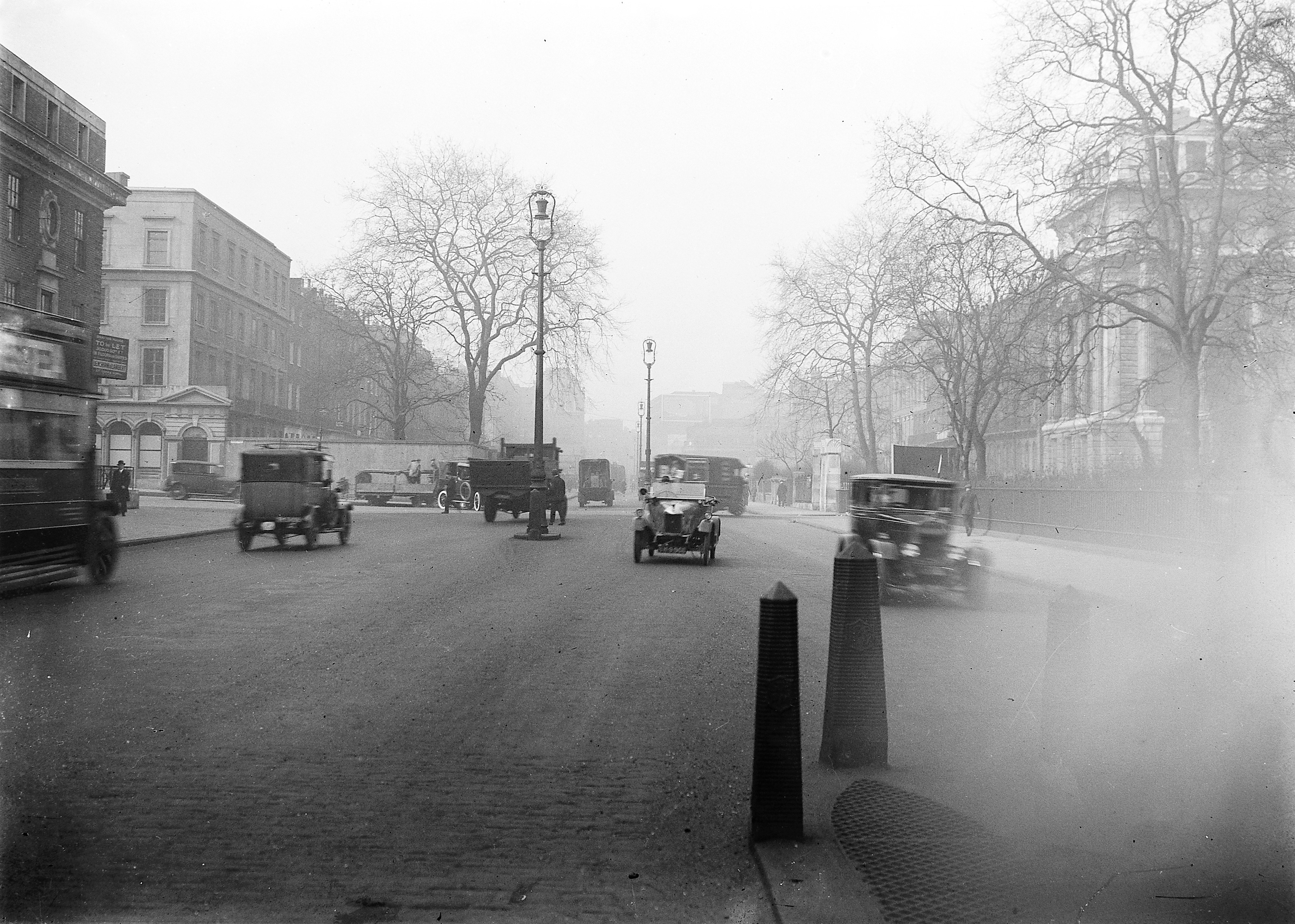|
Septimus Warwick
Septimus Warwick (1881-1953) was a British architect who started his career as a designer of town halls in a partnership with H. Austen Hall. Warwick designed Lambeth Town Hall on Brixton Hill and Acre Lane, Brixton, London SW2, a Grade II listed building, built in 1908. He also designed the Holborn Town Hall (1906) and the Shire Hall in Reading (1909). Warwick moved to Canada in 1913, where he initially worked with Frank Simon on the Legislative Buildings at Winnipeg, Manitoba. Subsequently he designed a number of building for clients in Montreal. He returned to England in 1920. At the end of the twenties, he was contracted by Sir Henry Wellcome to design his new Wellcome Research Institution, now the Wellcome Library on Euston Road. Notable buildings *Lambeth Town Hall, London (1908) * Old Shire Hall, Reading (1911) *Canada House, London (1925 renovations) *Wellcome Library The Wellcome Library is founded on the collection formed by Sir Henry Wellcome (1853–1936), who ... [...More Info...] [...Related Items...] OR: [Wikipedia] [Google] [Baidu] |
Lambeth Town Hall
Lambeth Town Hall, also known as Brixton Town Hall, is a municipal building at the corner of Brixton Hill and Acre Lane, Brixton, London. The town hall, which is the headquarters of Lambeth London Borough Council, is a Grade II listed building. History The building was commissioned to replace the Old Town Hall in Kennington Road which had been completed in 1853. After the area became a metropolitan borough in 1900, civic leaders decided that the old building was inadequate for their needs and decided to procure a larger building: the site they selected had been occupied by some residential properties. After a design competition that attracted 143 entries, Septimus Warwick and H. Austen Hall were selected to design the building in Edwardian Baroque style. The foundation stone was laid by the mayor, Frederick Powell, on the 21 July 1906. The building was built by John Greenwood Limited at a cost, excluding furnishings, of £40,000 and it was formally opened by the Prince and ... [...More Info...] [...Related Items...] OR: [Wikipedia] [Google] [Baidu] |
Wellcome Library
The Wellcome Library is founded on the collection formed by Sir Henry Wellcome (1853–1936), whose personal wealth allowed him to create one of the most ambitious collections of the 20th century. Henry Wellcome's interest was the history of medicine in a broad sense and included subjects such as alchemy or witchcraft, but also anthropology and ethnography. Since Henry Wellcome's death in 1936, the Wellcome Trust has been responsible for maintaining the Library's collection and funding its acquisitions. The library is free and open to the public. History Henry Wellcome began collecting books seriously in the late 1890s, using a succession of agents and dealers, and by travelling around the world to gather whatever could be found. Wellcome's first major entry into the market took place at the auction of William Morris's library in 1898, where he was the biggest single purchaser, taking away about a third of the lots. His interests were truly international and the broad coverage of ... [...More Info...] [...Related Items...] OR: [Wikipedia] [Google] [Baidu] |
Lambeth Town Hall, May 2015 02
Lambeth () is a district in South London, England, in the London Borough of Lambeth, historically in the County of Surrey. It is situated south of Charing Cross. The population of the London Borough of Lambeth was 303,086 in 2011. The area experienced some slight growth in the medieval period as part of the manor of Lambeth Palace. By the Victorian era the area had seen significant development as London expanded, with dense industrial, commercial and residential buildings located adjacent to one another. The changes brought by World War II altered much of the fabric of Lambeth. Subsequent development in the late 20th and early 21st centuries has seen an increase in the number of high-rise buildings. The area is home to the International Maritime Organization. Lambeth is home to one of the largest Portuguese-speaking communities in the UK, and is the second most commonly spoken language in Lambeth after English. History Medieval The origins of the name of Lambeth come from it ... [...More Info...] [...Related Items...] OR: [Wikipedia] [Google] [Baidu] |
Brixton Hill
Brixton Hill is the name given to a section of road between Brixton and Streatham Hill in south London, England. Brixton Hill and Streatham Hill form part of the traditional main London to Brighton road (A23). The road follows the line of a Roman Road, the London to Brighton Way, which diverges from Stane Street near Kennington, and led south from the capital, Londinium, to a port on the south coast. History Prior to the late 19th century, the road was known as Brixton (or Bristow) Causeway. On the eastern side of the road, a series of tree-lined open spaces and front gardens make up Rush Common — an area of former common land that, although it is subject to a prohibition on 'erections above the surface of the earth' under an Act of Parliament of 1806, has seen some incursions for building. The name Brixton Hill has subsequently been given to the residential areas on both sides of the road, and since 2002, it has also been the name of an electoral ward of the London Borou ... [...More Info...] [...Related Items...] OR: [Wikipedia] [Google] [Baidu] |
Acre Lane
List of A roads in zone 2 in Great Britain starting south of the River Thames The River Thames ( ), known alternatively in parts as the The Isis, River Isis, is a river that flows through southern England including London. At , it is the longest river entirely in England and the Longest rivers of the United Kingdom, se ... and east of the A3 (roads beginning with 2). __FORCETOC__ Single- and double-digit roads Triple-digit roads Four digit roads {{United Kingdom roads 2 2 ... [...More Info...] [...Related Items...] OR: [Wikipedia] [Google] [Baidu] |
Brixton
Brixton is a district in south London, part of the London Borough of Lambeth, England. The area is identified in the London Plan as one of 35 major centres in Greater London. Brixton experienced a rapid rise in population during the 19th century as communications with central London improved. Brixton is mainly residential, though includes Brixton Market and a substantial retail sector. It is a multi-ethnic community, with a large percentage of its population of Afro-Caribbean descent. It lies within Inner London and is bordered by Stockwell, Clapham, Streatham, Camberwell, Tulse Hill, Balham and Herne Hill. The district houses the main offices of Lambeth London Borough Council. Brixton is south-southeast from the geographical centre of London (measuring to a point near Brixton Underground station on the Victoria Line). History Toponymy The name Brixton is thought to originate from Brixistane, meaning the stone of Brixi, a Saxon lord. Brixi is thought to have ere ... [...More Info...] [...Related Items...] OR: [Wikipedia] [Google] [Baidu] |
Listed Building
In the United Kingdom, a listed building or listed structure is one that has been placed on one of the four statutory lists maintained by Historic England in England, Historic Environment Scotland in Scotland, in Wales, and the Northern Ireland Environment Agency in Northern Ireland. The term has also been used in the Republic of Ireland, where buildings are protected under the Planning and Development Act 2000. The statutory term in Ireland is " protected structure". A listed building may not be demolished, extended, or altered without special permission from the local planning authority, which typically consults the relevant central government agency, particularly for significant alterations to the more notable listed buildings. In England and Wales, a national amenity society must be notified of any work to a listed building which involves any element of demolition. Exemption from secular listed building control is provided for some buildings in current use for worship, ... [...More Info...] [...Related Items...] OR: [Wikipedia] [Google] [Baidu] |
Holborn Town Hall
Holborn Town hall is a municipal building on High Holborn, Holborn, London. It is a Grade II listed building. History The first town hall was a substantial structure on the corner of Gray's Inn Road and Clerkenwell Road which had been designed by Lewis Isaacs in an Italianate style, built by Brown & Robinson of Finsbury and completed in 1879. Following the creation of the Metropolitan Borough of Holborn in 1900, consideration was given to expanding this building but this proposal was rejected on the grounds that the old building would be difficult to adapt. After being used as a concert hall during the first half of the 20th century, it was demolished in the 1960s. Instead it was decided to extend an existing building on High Holborn which had been designed by William Rushworth in the French Renaissance style and which had opened as a public library in 1894. The design for the existing (eastern) wing had involved a narrow main frontage with four bays facing onto High Holborn; ... [...More Info...] [...Related Items...] OR: [Wikipedia] [Google] [Baidu] |
Roseate Reading
The Roseate Reading Hotel (formerly the Forbury Hotel) is a boutique hotel in Reading, Berkshire, England. It is situated in the Forbury, formerly a part of Reading Abbey, and on the southern side of the modern Forbury Gardens. The building that forms the front section of the hotel was the Shire Hall for the County of Berkshire, built in 1911 and used as such until 1981, and is a grade II listed building. History Since Berkshire County Council had been formed in 1889, meetings of the full council had taken place in the assize courts. Following continuing increases in the responsibilities of the county council, county leaders chose to procure a new purpose-built Shire Hall for council officers and their departments: the site selected on the southern side of Forbury Gardens had been occupied by buildings associated with the Royal Berkshire Seed Establishment. The new building, which was designed by Septimus Warwick and H Austen Hall in the Queen Anne style, was built by E. ... [...More Info...] [...Related Items...] OR: [Wikipedia] [Google] [Baidu] |
Sir Henry Wellcome
Sir Henry Solomon Wellcome (August 21, 1853 – July 25, 1936) was an American pharmaceutical entrepreneur. He founded the pharmaceutical company Burroughs Wellcome & Company with his colleague Silas Burroughs in 1880, which is one of the four large companies to eventually merge to form GlaxoSmithKline. He left a large amount of capital for charitable work in his will, which was used to form the Wellcome Trust, one of the world's largest medical charities. He was a keen collector of medical artefacts which are now displayed at the Wellcome Collection. Biography Wellcome was born in a frontier log cabin in what would later become Almond, Wisconsin, to Rev. S. C. Wellcome, an itinerant missionary who travelled and preached in a covered wagon, and Mary Curtis Wellcome. He had an early interest in medicine, particularly marketing. His first product, at the age of 16, was invisible ink (in fact just lemon juice), which he advertised in the Garden City (MN) Herald. He was brought ... [...More Info...] [...Related Items...] OR: [Wikipedia] [Google] [Baidu] |
Euston Road
Euston Road is a road in Central London that runs from Marylebone Road to King's Cross. The route is part of the London Inner Ring Road and forms part of the London congestion charge zone boundary. It is named after Euston Hall, the family seat of the Dukes of Grafton, who had become major property owners in the area during the mid-19th century. The road was originally the central section of New Road from Paddington to Islington which opened in 1756 as London's first bypass. It provided a route along which to drive cattle to Smithfield Market avoiding central London. Traffic increased when major railway stations, including Euston, opened in the mid-19th century and led to the road's renaming in 1857. Euston Road was widened in the 1960s to cater for the increasing demands of motor traffic, and the Euston Tower was built around that time. The road contains several significant buildings including the Wellcome Library, the British Library and the St Pancras Renaissance L ... [...More Info...] [...Related Items...] OR: [Wikipedia] [Google] [Baidu] |
Canada House
Canada House (french: Maison du Canada) is a Greek Revival building on Trafalgar Square in London. It has been a Grade II* Listed Building since 1970. It has served as the offices of the High Commission of Canada in the United Kingdom since 1925. History The building which would later become known as Canada House was built between 1824 and 1827 to designs by Sir Robert Smirke, the architect of the British Museum. It was originally two buildings used by the Union Club and the Royal College of Physicians. Under the leadership of High Commissioner Peter Charles Larkin the Canadian government acquired the Union Club in 1923 for the sum of £223,000.Canada House – the Government of Canada's showpiece for close to a century [...More Info...] [...Related Items...] OR: [Wikipedia] [Google] [Baidu] |







_with_his_brother_George_Wellcome_L0029713_(cropped).jpg)

